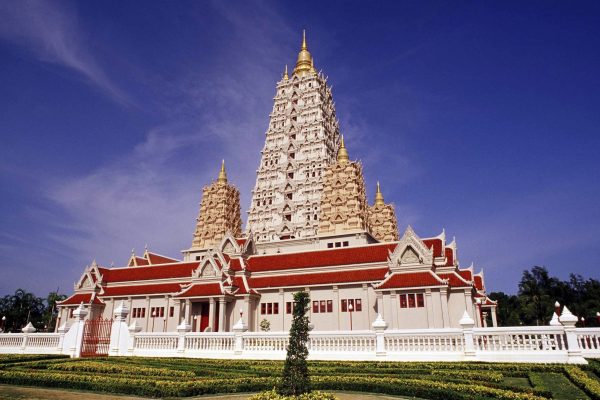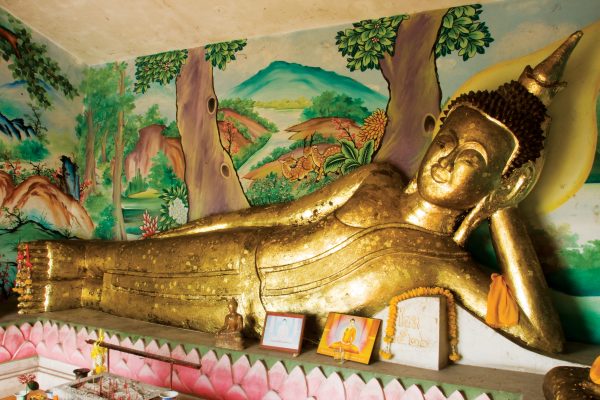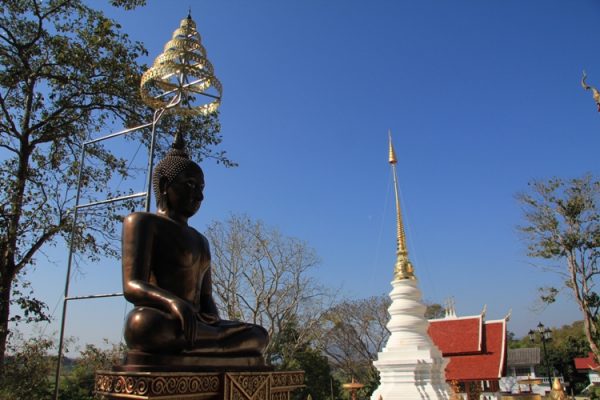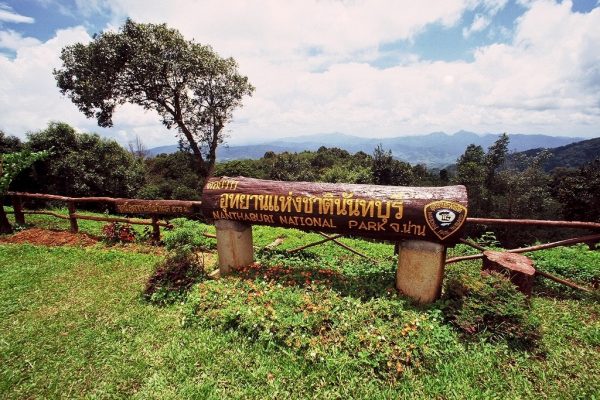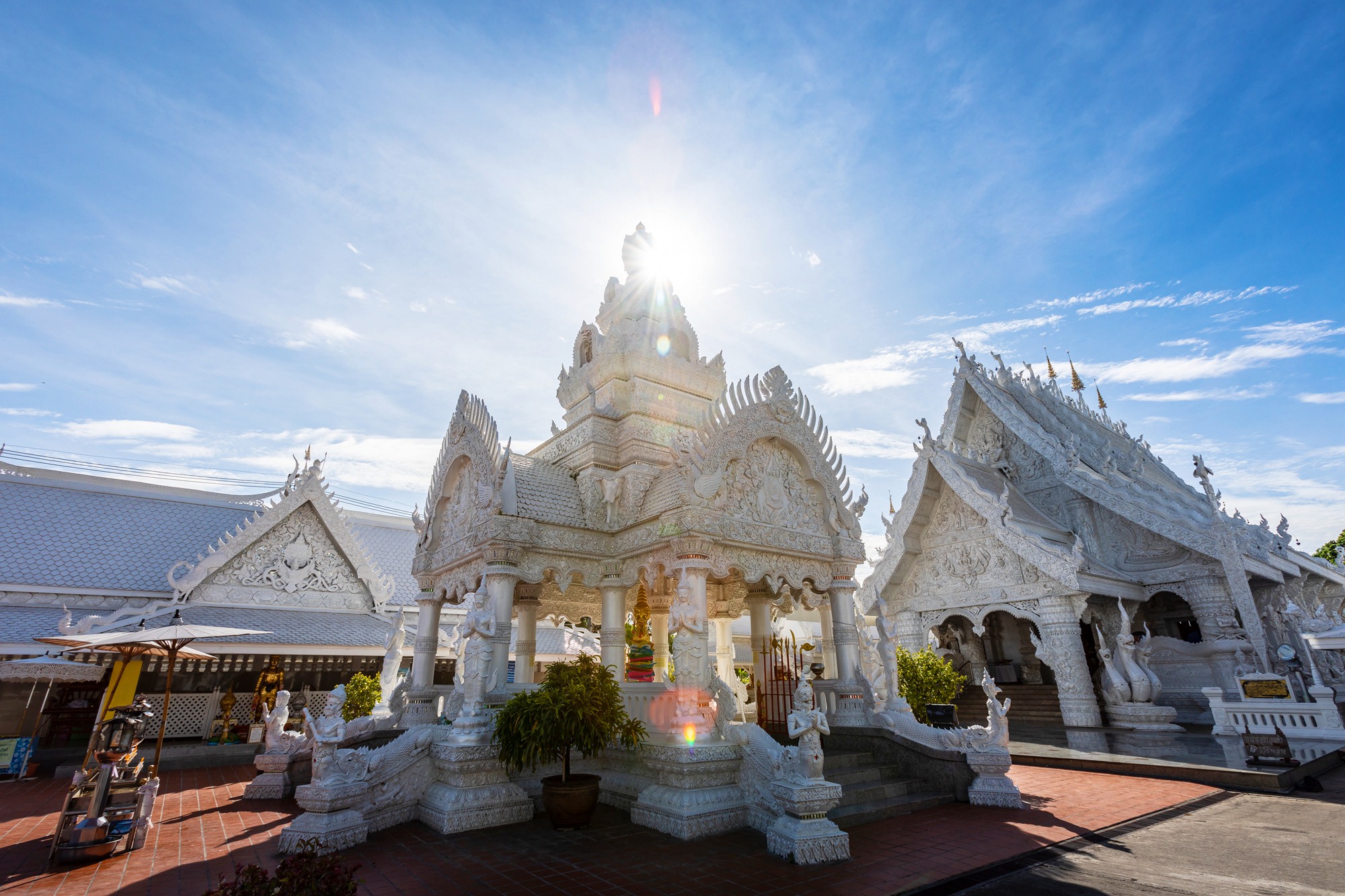
Wat Ming Mueang
Housing the city pillar, Wat Ming Mueang is situated on Suriyaphong Road. The temple was once an abandoned temple where the city pillar, made of 2 huge trunks, was found in the ruins of its vihara. Chao Anantaworaritthidej, the Nan ruler, established the temple around 1857 and named it ‘Wat Ming Mueang’ after the name of the city pillar ‘Sao Ming Mueang.’ (Sao means pillar) The ubosot was pulled down in 1984 and the new one was constructed in the style of the contemporary Lanna architecture. (Lanna refers to the northern part of Thailand) The outstanding features of the new ubosot include the fine carved relieves and sculptures, by Chiang Saen artists, on the outside of the building; the mural paintings, by contemporary local artists, depicting Nan people’s every life; and the 3-meter-high city pillar, standing in the pavilion in front of the ubosot. The city pillar’s base is wooden carved and decorated with gold leaves. The top of the pillar is carved in the image of 4-faced Brahma; each face is entitled Metta, Karuna, Muthita, and Ubekkha respectively. The historical sites and the antiques in the temple Sculpted and decorated with gold leaves, the principle Buddha image is influenced by a type of art in northern Thailand called Chiang Saen Singha Nueng. The image is identified to be as old as 400 years and has been renovated up to 4 times already. In the latest renovation, the craftsman had extended the size of the image to the lap width of 80 inches. The image is called “Luang Pho Phra Si Ming Mueang”. This Buddha image is considered an excellent example of the early Chiang Saen Singha Nueng image because of its beautiful topknot, delicately carved from a gemstone found only in Lanna. The stupa, or ‘Chedi’, is a historical site built at the same time as the temple. Before the renovation, it was constructed in the style of Burmese architecture. After the renovation, the stupa became a Lanna-style one, however, surrounded, at its four corners, by Burmese-style small stupas with Burmese royal umbrellas on top. The vihara is in the style of Shan, or Tai Yai, art mixed with Lanna. The interior features carved images decorated with gold leaves. The ceiling depicts Trailokya or the Buddhist cosmology and the roof is decorated with 34 swan sculptures. Decorated with elephant sculptures, the well, known as “Nam Bo Chang Mup, has an arch roof. The well is important to the community because it is the only well in the neighborhood. In the past, people fetched the water from this well to drink and sell in the market. The well is located at the midpoint of the route leading in and out of the city. Thus, when the commuters were traveling to the city, they would stop by this well and drank water from it, and so did the commuters who travelled out of town.

